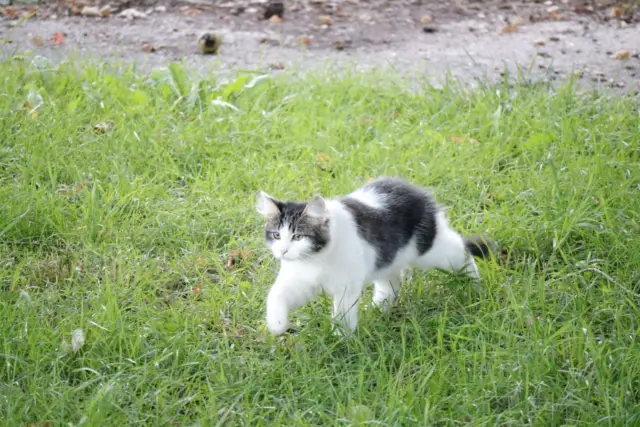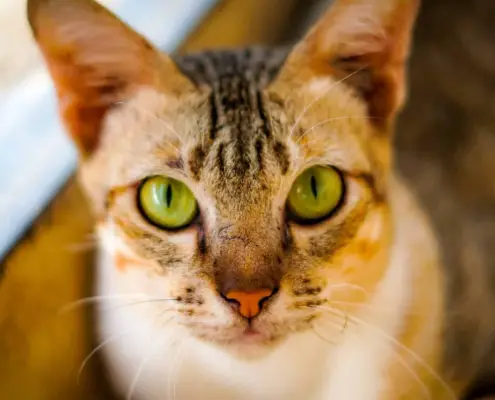
Cats are known for their grace and agility, and one of the most intriguing aspects of their behavior is their ability to move silently. Unlike many other animals, cats have a unique way of walking that allows them to make little to no noise. This stealthy behavior has fascinated humans for centuries, and there are several reasons why cats have evolved to walk quietly.
Anatomy and physiology of a cat’s feet
To understand why cats walk quietly, it is important to examine the anatomy and physiology of their feet. Cats have a digitigrade stance, meaning they walk on their toes rather than the soles of their feet like humans do. This anatomical feature allows them to distribute their weight evenly and move with precision. Additionally, cats have retractable claws that they can control, enabling them to walk silently by keeping their claws retracted when necessary.
Adaptations for silent movement in cats
In addition to their unique foot structure, cats have other adaptations that contribute to their silent movement. The muscles in a cat’s legs and feet are highly developed, allowing for precise control and minimal noise. Their long, flexible spine also aids in their ability to move silently, as it allows them to maintain balance and control their movements with ease. These physical adaptations, combined with their natural grace and agility, make cats incredible silent walkers.
Hunting instincts and the need for stealth
Cats are natural predators, and their ability to walk quietly is directly linked to their hunting instincts. In the wild, cats rely on stealth to sneak up on their prey without being detected. By walking silently, they increase their chances of a successful hunt by minimizing the risk of alerting their prey. This behavior is deeply ingrained in their DNA and has been passed down through generations of cats.
The role of paw pads in reducing noise
Another important factor in a cat’s ability to walk quietly lies in their paw pads. Cats have specialized paw pads that act as shock absorbers and provide traction. These pads not only allow cats to move silently by cushioning their steps, but they also help them navigate different surfaces without slipping or making noise. The soft, cushioned nature of their paw pads dampens the sound of their footsteps, allowing them to walk with stealth.
Cat behavior and the importance of being silent
Cats are naturally solitary animals, and their silent walking behavior is closely tied to their independent nature. In the wild, making noise can attract unwanted attention from predators or competitors, so cats have learned to be silent as a survival mechanism. Even in domesticated cats, this instinct remains strong. Being able to move silently allows cats to explore their surroundings without drawing attention to themselves, giving them a sense of security and control.
Cat breeds known for their quiet walking
While all cats have the ability to walk quietly, there are certain breeds that are known for their exceptional stealth. The Siamese, Bengal, and Abyssinian breeds, for example, are often praised for their graceful and silent movements. These breeds have been selectively bred for their agility and athleticism, which contributes to their ability to walk quietly. However, it is important to note that every cat, regardless of breed, possesses the innate ability to move silently.
Tips for observing and appreciating a cat’s silent walk
If you have a cat or have the opportunity to observe cats, there are a few tips to enhance your appreciation of their silent walk. Firstly, create a calm and quiet environment to allow the cat to feel comfortable and move naturally. Avoid sudden movements or loud noises that could startle the cat and disrupt their silent walk. Additionally, pay attention to their body language and observe the fluidity of their movements. The more you observe and appreciate a cat’s silent walk, the more you will admire their incredible grace and agility.
Common misconceptions about cats walking quietly
There are several misconceptions about why cats walk quietly that are worth addressing. One common belief is that cats have a natural soundproofing mechanism in their feet. While it is true that cats have specialized foot anatomy and paw pads, this does not completely eliminate the sound of their footsteps. Cats are simply skilled at minimizing noise through their physical adaptations and behavior. Another misconception is that only certain breeds can walk quietly. As mentioned earlier, all cats have the ability to walk silently, although some breeds may excel in their stealthy movements.
The evolutionary marvel of a cat’s silent walk
In conclusion, the quiet walking of cats is a fascinating behavior that is rooted in their anatomy, physiology, and hunting instincts. Cats’ unique foot structure, retractable claws, and muscular control contribute to their silent movement. Their natural need for stealth, combined with the role of their paw pads, allows them to move silently and with precision. Whether you observe your own cat or marvel at the graceful movements of cats in the wild, take a moment to appreciate the evolutionary marvel of their silent walk. It is truly a testament to their agility, adaptability, and innate hunting abilities.
If you enjoyed my article, I would appreciate you sharing it with your network.

Sima Ndlebe
Sima writes for CatBuzz. He is interested in Cats, Health and Fitness, and Entrepreneurship.
Published: 13 December 2023




